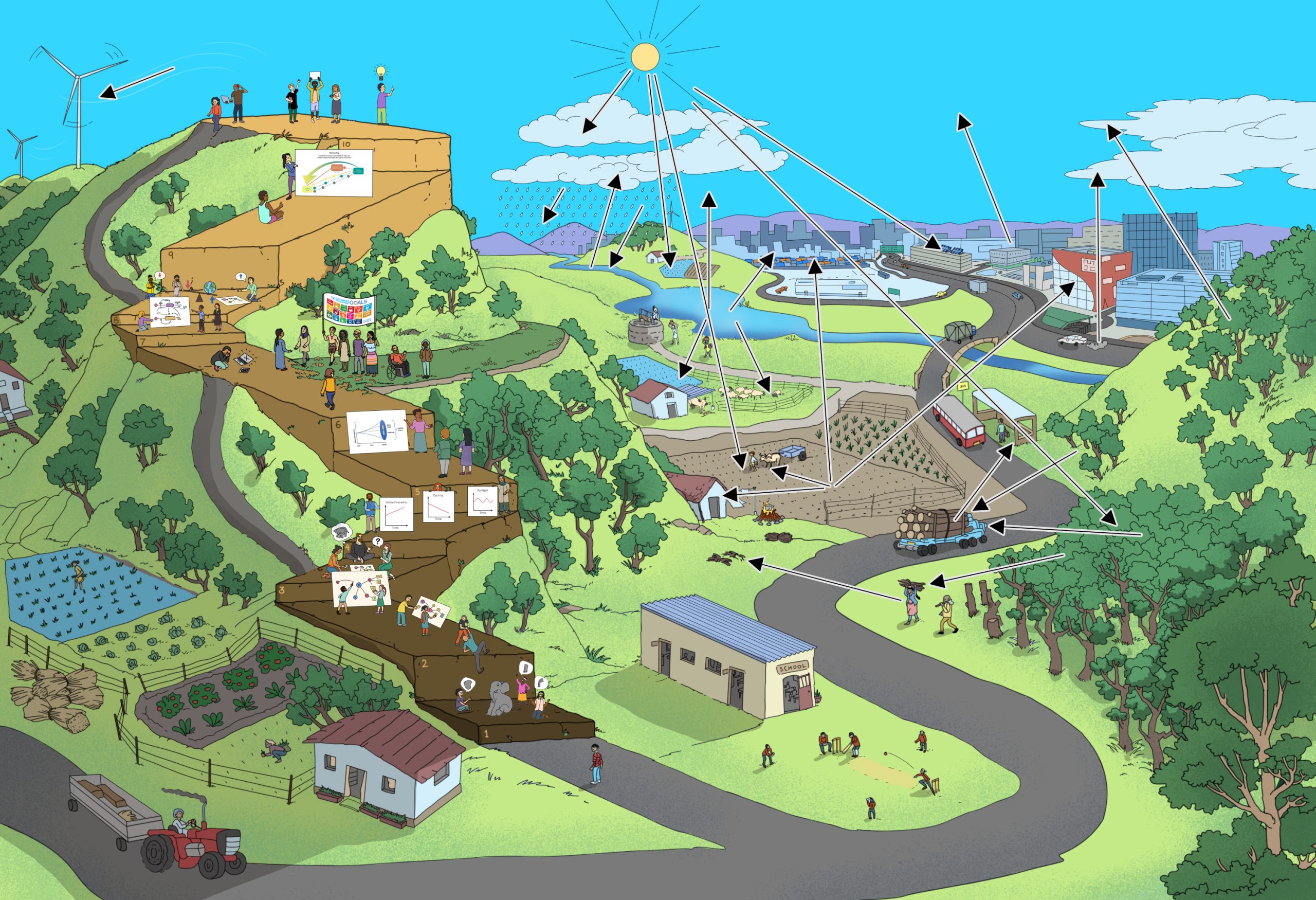Systems thinking is the ability to describe and/ or visualise a part of a complex reality, express that part of reality as a model, understand the model as a system, use the model to explain the behaviour of the system, anticipate the behaviour of the system, and evaluate its impacts on sustainable development, identify potential points of, and types of interventions, generate options to act, assess their impacts in the frame of sustainable development, and decide whether further actions are necessary or not.
1. What does this mean?
In this step, learners work with their system model to change the current and anticipated unsustainable behaviour of the system, into a new behaviour in line with sustainable development goals or frameworks. In this process, learners have to take into consideration dilemmas, trade-offs, ethics, strategic thinking, and counter-intuitive actions.
2. What is the aim?
To enable learners to:
- Reflect on unsustainable situations and decide on desired futures in the frame of S.
- Apply the understanding of leverage points and their handling, to decide the course of interventions to achieve desired future outcomes
- Deal with potential dilemmas
- prepare a strategy to implement the intervention.
4. Activities, tasks and suggested learning methods
In Step 8 learners understood that with the same leverage point, systems may be changed in different ways. In this step, learners explore the possibility to change a system in the intended directions towards sustainable development.
Ask the learners to
- Look at the list of unsustainable outputs/ outcomes as identified in the analysis of the system/sub-system they chose, in Step 6
- Imagine a sustainable future for the system they are exploring
- Next, identify one or more leverage points to improve sustainability outcomes, and explain their choice. For example:
- I pick … as it is related to … unsustainable behaviour.
- I pick … because other unsustainable behaviour will also be addressed if I address this one.
- I pick … because I can do something here, but not at another leverage point because I am not able to do so.
- Create ideas and strategies to enable the change needed for the desired sustainability outcomes in their system.
Note: Learners may choose actions that they can themselves implement. They may also choose actions to be carried out by others and may develop their strategies more theoretically.
Learning methods to support the Activity:
5. Conclusion
- Reflect on what is learnt, either summarizing the activity or asking some of the learners to do so.
- Ask the group to think about and share further questions
- The answers to these further leading questions may be discussed in the next (or one or more of the next steps).
Illustration of staircase model for further leading questions
6. Suggested Further Leading Questions
- Is the idea / strategy really improving sustainability outcomes?
- What to do if not?
7. Example
The theory and activity guidance in this step is illustrated with the topics of ‘cotton’ and ‘potato chips’.
Step 9 in the Jeans example


